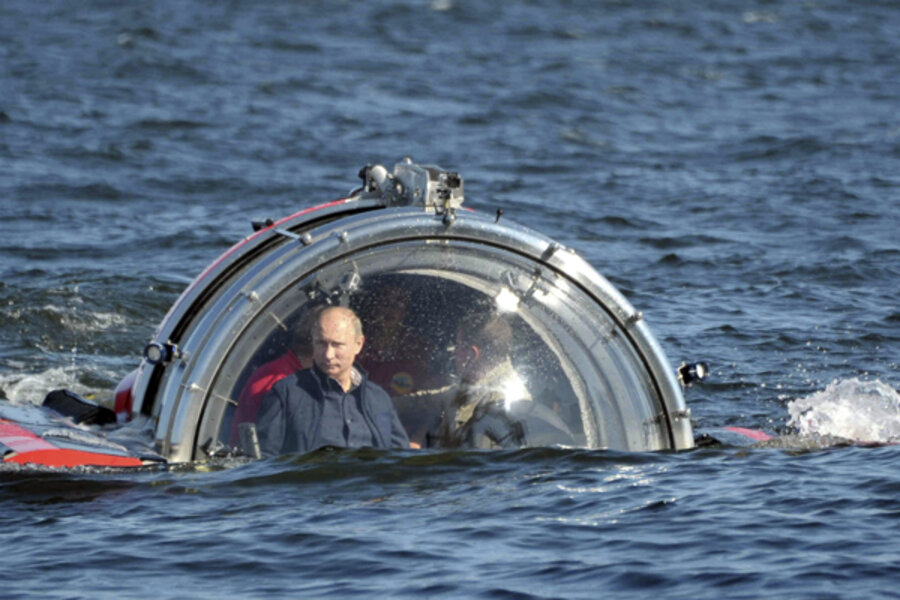Putin pays an underwater visit to Oleg
Loading...
No Russian summer would be complete without some publicly-staged feat of derring-do by President Vladimir Putin, who seems drawn to perform macho stunts as much out of a boyish sense of adventure as any public relations calculation.
This week saw President Putin plunge to the bottom of the frigid Gulf of Finland in a bubble-topped luxury submersible to view the amazingly well-preserved wreck of the Oleg – a steam-powered, wooden Czarist-era frigate that was accidentally sunk during war games in 1869.
Putin returned from his half-hour excursion to a depth of 60 meters effusing about both the modern, 6-seat C-Explorer-5 mini-sub and the remains of the Oleg, which he said was in such good shape he could read its name emblazoned on the hull.
"This submersible is different, impressions are also a bit different," said Putin, who knows a thing or two about submarines.
His first major crisis as president was the August 2000 Kursk disaster, a Russian ballistic missile submarine that sank in the Arctic with all hands, followed by a badly-botched rescue effort that exposed the incompetence, mendacity, and callousness of Russian officialdom to the world.
On at least two occasions, Putin has gone on undersea patrols aboard a nuclear submarine, and dramatic photos of him in naval uniform are among the most popular stock images offered by the state news agency RIA-Novosti.
In 2009 he rode a Russian deep-sea Mir-1 mini-submersible to the bottom of Siberia's Lake Baikal, the world's deepest lake, and later reported that the lake's famously pure water actually looked to him like "plankton soup."
But the brand new mini-sub that took him to the bottom of the Gulf of Finland Monday was much better, he said, because it has a large plexiglass bubble that allows a full 360 degree view. "It's very interesting. Impressive. … It’s like a time machine taking you to another period," he said.
The wreck of the Oleg – one of the last wooden warships, which went down in 15 minutes after being accidentally rammed by a new ironclad vessel – was discovered near Gogland Island in the Gulf of Finland by Russian researchers ten years ago. The Kremlin has given the Russian Geographical Society a major grant to study it and other Russian warships whose remains litter the bottom of the Baltic Sea after many wars.
"We didn't really do such work before. I think the time has come now, we can finally do that in terms of financial and technical capabilities. The moral duty towards the fatherland defenders goes without saying," Putin told reporters.
Putin frequently combines his publicity stunts with causes that he supports. Last year he took to the air in a motorized hang glider to guide a flock of endangered Siberian cranes onto their correct migratory path.
He has harpooned a grey whale and shot a rampaging tiger with a tranquilizer dart – both times in the interests of science – and regularly attends conferences devoted to saving endangered animal species.
As wildfires raged across Russia three summers ago, Putin personally took control of a Beriev-200 amphibious water-bomber and was shown on Russian TV expertly dousing an out-of-control forest fire.
Putin's extracurricular antics, which seem bound to continue as long as he remains in the Kremlin, have included bare-chested fishing and horseback riding, driving the trans-Siberian highway in a Russian-made Lada, and multiple displays of his black-belt prowess at judo.
And, who knows? The summer's not over yet. Mount Everest beckons. Or better, perhaps, a challenging mountain in the former Soviet Union. It happens that there's a very impressive one in the Tien Shan range of central Asia, which the Republic of Kyrgyzstan recently named "Putin's Peak," in honor of Vladimir Putin.








